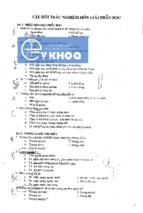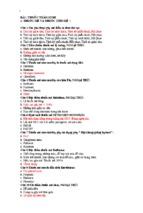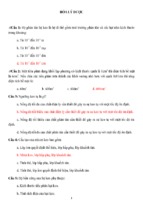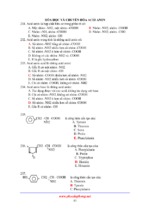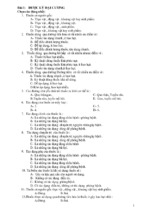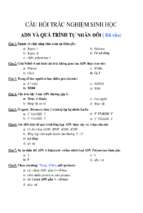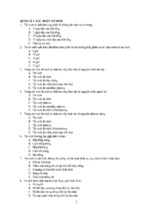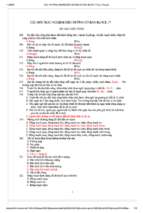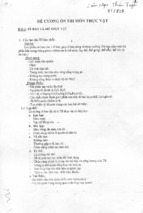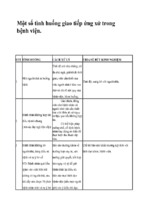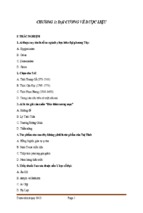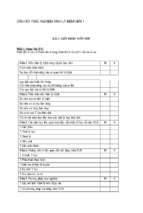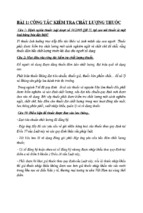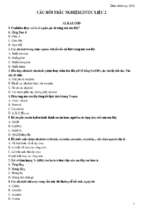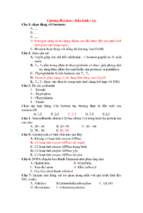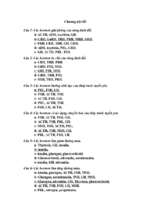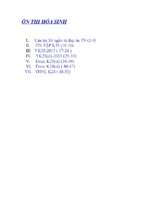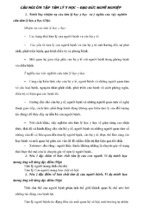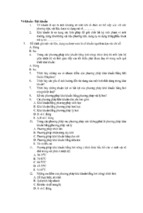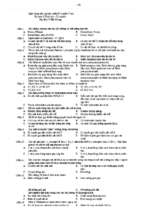PR
EV
IE
Instructor’s Edition
W
Medical Terminology
NOT FOR PRINTING OR INSTRUCTIONAL USE
W
Medical Terminology
Charles G. Blum and Adam A. Wilcox
Developmental Editor:
Laurie Perry
Copyeditor:
Cathy Albano
Series Designer:
Adam A. Wilcox
COPYRIGHT © 2009 Axzo Press
IE
Series Product Managers:
ALL RIGHTS RESERVED. No part of this work may be reproduced, transcribed, or used in any form or by any
meansgraphic, electronic, or mechanical, including photocopying, recording, taping, Web distribution, or
information storage and retrieval systemswithout the prior written permission of the publisher.
For more information, go to www.axzopress.com.
Trademarks
EV
ILT Series is a trademark of Axzo Press.
Some of the product names and company names used in this book have been used for identification purposes only and
may be trademarks or registered trademarks of their respective manufacturers and sellers.
Disclaimer
We reserve the right to revise this publication and make changes from time to time in its content
without notice.
ISBN 10: 1-4188-6227-4
ISBN 13: 978-1-4188-6227-5
Printed in the United States of America
PR
1 2 3 4 5 GL 06 05 04 03
NOT FOR PRINTING OR INSTRUCTIONAL USE
Introduction
Topic A:
Topic B:
Topic C:
Topic D:
W
Contents
iii
About the manual............................................................................... iv
Setting student expectations ............................................................. viii
Classroom setup..................................................................................x
Support............................................................................................... xi
Common root and musculoskeletal terms
1-1
IE
Topic A: Common root terms .......................................................................... 1-2
Topic B: Common musculoskeletal terms...................................................... 1-12
Unit summary: Common root and musculoskeletal terms .............................. 1-21
Integumentary and digestive terms
2-1
Topic A: Integumentary system terms ............................................................. 2-2
Topic B: Digestive system terms .................................................................... 2-11
Unit summary: Integumentary and digestive terms......................................... 2-21
Cardiovascular and respiratory terms
3-1
EV
Topic A: Cardiovascular system terms ............................................................ 3-2
Topic B: Respiratory system terms................................................................. 3-14
Unit summary: Cardiovascular and respiratory terms..................................... 3-25
Urinary and reproductive terms
4-1
Topic A: Urinary system terms........................................................................ 4-2
Topic B: Reproductive system terms.............................................................. 4-12
Unit summary: Urinary and reproductive terms.............................................. 4-23
Neurosensory terms and root-term review
5-1
Topic A: Neurosensory system terms .............................................................. 5-2
Topic B: Review of root terms ....................................................................... 5-13
Unit summary: Neurosensory terms and root-term review ............................. 5-28
Prefixes and suffixes A through H
6-1
PR
Topic A: Prefixes and suffixes A through C.................................................... 6-2
Topic B: Prefixes and suffixes D through E .................................................... 6-7
Topic C: Prefixes and suffixes F through H ................................................... 6-12
Unit summary: Prefixes and suffixes A through H ......................................... 6-17
Prefixes and suffixes I through O
7-1
Topic A: Prefixes and suffixes I through K ..................................................... 7-2
Topic B: Prefixes and suffixes L through M ................................................... 7-7
Topic C: Prefixes and suffixes N through O................................................... 7-11
Unit summary: Prefixes and suffixes I through O........................................... 7-15
Prefixes and suffixes P through Z
8-1
Topic A: Prefixes and suffixes that start with P............................................... 8-2
Topic B: Prefixes and suffixes R through S ................................................... 8-10
Topic C: Prefixes and suffixes T through X ................................................... 8-16
Unit summary: Prefixes and suffixes P through Z .......................................... 8-21
NOT FOR PRINTING OR INSTRUCTIONAL USE
ii
Medical Terminology
Color prefixes and suffixes and medical titles
9-1
Common medical abbreviations
W
Topic A: Color prefixes and suffixes .............................................................. 9-2
Topic B: Medical title abbreviations ............................................................... 9-7
Unit summary: Color prefixes and suffixes and medical titles ....................... 9-10
10-1
Topic A: Common medical abbreviations...................................................... 10-2
Unit summary: Common medical abbreviations ........................................... 10-14
Hospital and lab abbreviations
11-1
Topic A: Hospital area abbreviations ............................................................. 11-2
Topic B: Lab tests, chemistries, and symbol abbreviations ........................... 11-5
Unit summary: Hospital and lab abbreviations.............................................. 11-10
IE
Directional terms and word combinations
12-1
Topic A: Directional terms ............................................................................. 12-2
Topic B: Word combinations ......................................................................... 12-5
Unit summary: Directional terms and word combinations ............................ 12-22
Course summary
S-1
Topic A: Course summary............................................................................... S-2
Topic B: Continued learning after class .......................................................... S-4
I-1
PR
EV
Index
NOT FOR PRINTING OR INSTRUCTIONAL USE
iii
W
Medical Terminology
Introduction
IE
After reading this introduction, you will know
how to:
A Use ILT Series training manuals in
general.
B Use prerequisites, a target student
description, course objectives, and a skills
inventory to properly set students’
expectations for the course.
EV
C Set up a classroom to teach this course.
D Get support for setting up and teaching this
PR
course.
NOT FOR PRINTING OR INSTRUCTIONAL USE
iv
Medical Terminology
ILT Series philosophy
W
Topic A: About the manual
Our goal is to make you, the instructor, as successful as possible. To that end, our
training manuals facilitate students’ learning by providing structured interaction
with the subject matter itself. While we provide text to help you explain difficult
concepts, the hands-on activities are the focus of our courses. Leading the students
through these activities will teach the skills and concepts effectively.
IE
We believe strongly in the instructor-led classroom. For many students, having a
thinking, feeling instructor in front of them will always be the most comfortable way to
learn. Because the students’ focus should be on you, our manuals are designed and
written to facilitate your interaction with the students, and not to call attention to
manuals themselves.
We believe in the basic approach of setting expectations, then teaching, and providing
summary and review afterwards. For this reason, lessons begin with objectives and end
with summaries. We also provide overall course objectives and a course summary to
provide both an introduction to and closure on the entire course.
Our goal is your success. We encourage your feedback in helping us to continually
improve our manuals to meet your needs.
EV
Manual components
The manuals contain these major components:
• Table of contents
• Introduction
• Units
• Course summary
• Index
Each element is described below.
Table of contents
PR
The table of contents acts as a learning roadmap for you and the students.
Introduction
The introduction contains information about our training philosophy and our manual
components, features, and conventions. It contains target student, prerequisite,
objective, and setup information for the specific course. Finally, the introduction
contains support information.
NOT FOR PRINTING OR INSTRUCTIONAL USE
Introduction
v
Units
W
Units are the largest structural component of the actual course content. A unit begins
with a title page that lists objectives for each major subdivision, or topic, within the unit.
Within each topic, conceptual and explanatory information alternates with activities.
Units conclude with a summary composed of one paragraph for each topic, and an
independent practice activity that gives students an opportunity to practice the skills
they’ve learned.
The conceptual information takes the form of text paragraphs, exhibits, lists, and tables.
The activities contain various types of questions, answers, activities, and other graphics,
and other information. Throughout a unit, instructor notes are found in the left margin.
IE
Each unit title page lists an estimated time for completion, but you have a great deal of
control over how long it will actually take to get through the material. Many of the
activities have questions or scenarios designed to stimulate discussion. You can adjust
the amount of time a unit takes by deciding how many students you ask to respond and
how long you allow a discussion to continue.
Course summary
This section provides a text summary of the entire course. It is useful for providing
closure at the end of the course. The course summary also indicates the next course in
this series, if there is one, and lists additional resources students might find useful as
they continue to learn about the subject matter.
EV
Index
PR
The index at the end of this manual makes it easy for you and your students to find
information about a particular component, feature, or concept.
NOT FOR PRINTING OR INSTRUCTIONAL USE
vi
Medical Terminology
Manual conventions
W
We’ve tried to keep the number of elements and the types of formatting to a minimum
in the manuals. We think this aids in clarity and makes the manuals more classically
elegant looking. But there are some conventions and icons you should know about.
Convention
Description
Italic text
In conceptual text, indicates a new term or feature.
Bold text
Instructor note/icon
In unit summaries, indicates a key term or concept. In an
independent practice activity, indicates an explicit item
that you select, choose, or type.
Instructor notes.
IE
In the left margin, provide tips, hints, and warnings for
the instructor.
Warnings prepare instructors for potential classroom
management problems.
Warning icon.
Tips give extra information the instructor can share with
students.
Tip icon.
Setup notes provide a realistic business context for
instructors to share with students, or indicate additional
setup steps required for the current activity.
EV
Setup icon.
Projector notes indicate that there is a PowerPoint slide
for the adjacent content.
Projector icon.
Hands-on activities
The hands-on activities are the most important parts of our manuals. They are usually
divided into two columns, with a question or concepts on the left and answers and
explanations on the right. To the far left, instructor notes provide tips, warnings, setups,
and other information for the instructor only. Here’s a sample:
A-1:
Discussing the brainstorming process
PR
Do it!
Exercises
1 Place the following brainstorming steps in the correct order.
Begin generating ideas.
Select the purpose.
Select the purpose.
Organize for the session.
Organize for the session.
Review the rules.
Ask questions and clarify ideas.
Begin generating ideas.
Review the rules.
Ask questions and clarify ideas.
NOT FOR PRINTING OR INSTRUCTIONAL USE
Introduction
vii
PowerPoint presentations
W
To assist in your presentation and provide students with a visual focus, there is a
PowerPoint presentation file to accompany each unit. Each presentation begins with a
list of unit objectives and finishes with a unit summary slide. We strongly recommend
that you run these presentations from the instructor’s station as you present the course
materials. A copy of PowerPoint Viewer is included, so it is not necessary to have
PowerPoint installed on your computer.
The ILT Series PowerPoint add-in
The CD also contains a PowerPoint add-in that enables you to do two things:
• Create slide notes for the class
• Display a control panel for the Flash movies embedded in the presentations
EV
IE
To load the PowerPoint add-in:
1 Copy the Course_ILT.ppa file to a convenient location on your hard drive.
2 Start PowerPoint.
3 Choose Tools, Macro, Security to open the Security dialog box. On the Security
Level tab, select Medium (if necessary), and then click OK.
4 Choose Tools, Add-Ins to open the Add-Ins dialog box. Then, click Add New.
5 Browse to and select the Course_ILT.ppa file, and then click OK. A message
box will appear, warning you that macros can contain viruses.
6 Click Enable Macros. The Course_ILT add-in should now appear in the
Available Add-Ins list (in the Add-Ins dialog box). The “x” in front of
Course_ILT indicates that the add-in is loaded.
7 Click Close to close the Add-Ins dialog box.
After you complete this procedure, a new toolbar will be available at the top of the
PowerPoint window. This toolbar contains a single button labeled “Create SlideNotes.”
Click this button to generate slide notes files in both text (.txt) and Excel (.xls) format.
By default, these files will be saved to the folder that contains the presentation. If the
PowerPoint file is on a CD-ROM or in some other location to which the SlideNotes files
cannot be saved, you will be prompted to save the presentation to your hard drive and
try again.
PR
When you run a presentation and come to a slide that contains a Flash movie, you will
see a small control panel in the lower-left corner of the screen. You can use this panel to
start, stop, and rewind the movie, or to play it again.
NOT FOR PRINTING OR INSTRUCTIONAL USE
viii
Medical Terminology
Topic B: Setting student expectations
W
Properly setting students’ expectations is essential to your success. This topic will help
you do that by providing:
• A description of the target student at whom the course is aimed
• A list of the objectives for the course
• A skills assessment for the course
Course prerequisites
Target student
IE
There are no specific prerequisites for this course.
Typical students of this course are those needing to learn about medical terminology
and basic abbreviations that are used in the medical field. For students planning to
continue with courses in the medical field, this course is a good starting point.
Course objectives
EV
You should share these overall course objectives with your students at the beginning of
the day. This will give the students an idea about what to expect, and will also help you
identify students who might be misplaced. Students are considered misplaced when they
lack the prerequisite knowledge or when they already know most of the subject matter
to be covered.
After completing this course, students will know how to:
• Identify common root terms and musculoskeletal system terms and their
meanings.
• Define integumentary system and digestive system terms and their meanings.
• Define cardiovascular system and respiratory system terms and their meanings.
• Define urinary system and reproductive system terms and their meanings.
• Define neurosensory system terms and their meanings, and review root terms by
recognizing their use in sentences.
PR
• Identify common medical prefixes and suffixes A through H.
• Identify common medical prefixes and suffixes I through O.
• Identify common medical prefixes and suffixes P through Z.
• Define prefixes and suffixes used for colors in relation to patients, and recognize
abbreviations of common medical titles, such as RN for registered nurse.
• Define common medical abbreviations, such as ss for half and v.s. for vital
signs.
• Define abbreviations for specific areas of a hospital as well as abbreviations for
chemistries and terms used in laboratory tests.
• Define directional terms, such as lateral and posterior, and determine the
meaning of a long medical word by defining the individual pieces (prefix, root,
suffix).
NOT FOR PRINTING OR INSTRUCTIONAL USE
ix
Introduction
Skills inventory
W
Use the following form to gauge students’ skill level entering the class (students have
copies in the introductions of their student manuals). For each skill listed, have students
rate their familiarity from 1 to 5, with 5 being the most familiar. Emphasize that this is
not a test. Rather, it is intended to provide students with an idea of where they’re
starting from at the beginning of class. If a student is wholly unfamiliar with all the
skills, he or she might not be ready for the class. A student who seems to understand all
of the skills, on the other hand, might need to move on to the next course in the series.
Skill
1
2
3
4
5
Defining common root terms used in the medical field
IE
Defining musculoskeletal system terms
Defining integumentary system terms
Defining digestive system terms
Defining cardiovascular system terms
Defining respiratory system terms
EV
Defining urinary system terms
Defining reproductive system terms
Defining neurosensory system terms
Identifying medical prefixes and suffixes A through H
Identifying medical prefixes and suffixes I through O
Identifying medical prefixes and suffixes P through Z
Identifying prefixes used in relation to a patient’s color
PR
Defining medical titles
Identifying common medical abbreviations
Defining abbreviations used for hospital areas
Identifying abbreviations used in lab tests
Defining directional terms
Dissecting word combinations to determine meaning
NOT FOR PRINTING OR INSTRUCTIONAL USE
x
Medical Terminology
Topic C: Classroom setup
Computer requirements
W
All our courses assume that each student has a personal computer to use during the
class. Our hands-on approach to learning requires they do. This topic gives information
on how to set up the classroom to teach this course. It includes minimum requirements
for the students’ personal computers, setup information for the first time you teach the
class, and setup information for each time that you teach after the first time you set up
the classroom.
If you wish to use the PowerPoint presentation, you’ll need the following:
IE
• A Pentium-class, or better, computer
• A keyboard and a mouse
• A sound card and speakers
• Windows 98, NT, 2000, or XP
• A minimum of 64 MB of RAM, depending on your operating system
• A CD-ROM drive
• A super-VGA monitor
EV
• An overhead projector
• PowerPoint Viewer or PowerPoint 2000 or later
• Internet access
Downloading the PowerPoint presentations
PR
You can download the presentation files directly to the instructor machine, to a central
location on your own network, or to a disk.
1 Connect to www.axzopress.com.
2 Under Downloads, click Instructor-Led Training.
3 Browse the subject categories to locate your course.
NOT FOR PRINTING OR INSTRUCTIONAL USE
Introduction
xi
Topic D: Support
Contacting us
W
Your success is our primary concern. If you need help setting up this class or teaching a
particular unit, topic, or activity, please don’t hesitate to get in touch with us.
Please contact us through our Web site, www.axzopress.com. You will need to provide
the name of the course, and be as specific as possible about the kind of help you need.
Instructor’s tools
PR
EV
IE
Our Web site provides several instructor’s tools for each course, including course
outlines and answers to frequently asked questions. To download these files, go to
www.axzopress.com. Then, under Downloads, click Instructor-Led Training and
browse our subject categories.
NOT FOR PRINTING OR INSTRUCTIONAL USE
Medical Terminology
PR
EV
IE
W
xii
NOT FOR PRINTING OR INSTRUCTIONAL USE
1–1
W
Unit 1
Common root and musculoskeletal terms
Unit time: 30 minutes
Complete this unit, and you’ll know how to:
IE
A Identify and define common roots and the
medical terms that are derived from the
roots.
B Identify and define musculoskeletal terms
PR
EV
and the roots that are used to create the
terms.
NOT FOR PRINTING OR INSTRUCTIONAL USE
1–2
Medical Terminology
Topic A: Common root terms
Explanation
W
Some medical root terms do not fit neatly into a particular body system, and yet are very
important to the general understanding of medical terminology. In this topic, you will
learn to recognize some of these common terms, and how to define various pieces of
medical terminology based upon them.
To simplify the learning of these terms, they are divided into several groups.
Group 1
The first group of roots and terms we’ll consider includes the following:
Term
Definition
Adeno
Adenoma
Gland tumor
Calculi
Calculosis
Stones
Cele
Hydrocele
Water cyst or tumor
Cyto
Cytology
Study of cells
Glyco
Glycosuria
Sugar in the urine
Homeo, homo
Homeostasis
Same environment
EV
IE
Root
Adenoma
Definition
Root
Pronunciation
Origin
Common usage
Gland tumor
Adeno: gland
Ah-dee-no
Greek “aden”
Adenoids
PR
Click the
sound icon to hear the
pronunciation.
Exhibit 1-1: Adenoma means “gland tumor”
Here is a word-association mnemonic you can use to remember this root’s meaning:
Gland, sweat gland, sweaty dinosaur, a dino, adeno
NOT FOR PRINTING OR INSTRUCTIONAL USE
Common root and musculoskeletal terms
1–3
Calculosis
Definition
Root
Stones
Calculi: stone
Pronunciation
Origin
Common usage
Cal-cue-lie
Latin “calculi,”
meaning pebble
Calculator
EV
IE
Click the
sound icon to hear the
pronunciation.
W
Glands are organs, cells, or a group of cells that produce a secretory substance. Did you
know that insulin is a peptide hormone produced by the pancreas, which is also an organ
considered to be a gland? Peptide is a protein molecule. Insulin cannot be taken by
mouth because protein-digesting enzymes in the digestive tract would rapidly deactivate
it.
Exhibit 1-2: Calculosis means “stones”
Here is a word-association mnemonic you can use to remember this root’s meaning:
Stone, counting stones, math, calculus, calculi
PR
Stones are any abnormal concentration within the body, usually composed of salts,
acids, or cholesterol. Did you know that bile, stored in the gallbladder, is mostly a
cholesterol-insoluble fatty substance? When this substance is too concentrated, it may
crystallize and form what are commonly called gallstones. Kidney stones are formed in
the urinary tract from the salt residue of minerals.
NOT FOR PRINTING OR INSTRUCTIONAL USE
Medical Terminology
Hydrocele
Definition
Root
Pronunciation
Origin
Common usage
Water cyst or
tumor
Cele: tumor, cyst,
and hernia
Sell
Greek “kele,”
meaning tumor
or swelling
Celestial (heavenly)
IE
Click the
sound icon to hear the
pronunciation.
W
1–4
Exhibit 1-3: Hydrocele means “water cyst or tumor”
EV
A cyst is an abnormal pouch of fluid or solids brought on by infection or clogged ducts.
A hernia is the bulge of an organ through the wall of a sac that normally holds it in
place. And a tumor is an abnormal growth of tissue, usually of unknown origin.
Cytology
Definition
Root
Pronunciation
Origin
Study of cells
Cyto: cell
Sigh-toe
Greek “kytos,” meaning cell
PR
Click the
sound icon to hear the
pronunciation.
Exhibit 1-4: Cytology means “study of cells”
A cell is the smallest structural unit of all animals and plants. It is responsible for
growth, metabolism, and reproduction. Cancer cells reproduce at a faster rate than
normal cells. Radiation is used to kill off cells by inhibiting reproduction, thereby
destroying cancer cells before normal cells.
NOT FOR PRINTING OR INSTRUCTIONAL USE
Common root and musculoskeletal terms
Glycosuria
Definition
Root
Pronunciation
Origin
Sugar in the urine
Glyco: sweet, sugar
Gl-eye-co
Greek “glyks”
IE
W
Click the
sound icon to hear the
pronunciation.
1–5
Exhibit 1-5: Glycosuria means “sugar in the urine”
Here is a mnemonic for this root’s meaning:
Sugar, doughnut, "O," gee like "O," glyco
EV
Sugar is a sweet-tasting carbohydrate, which is a molecule that’s the main source of
energy. Diabetes is a hereditary disease caused by insufficient insulin, which allows
glucose to accumulate. At the beginning of the 19th century, physicians were unsure of
the cause of diabetes and treated it with laudanum, an opium-based preparation.
Homeostasis
Definition
Root
Pronunciation
Origin
Common usage
Same
environment
Homeo or homo:
similar, same, or
like
Hoe-me-oh
Greek
“hemores,”
meaning similar
Homogenize
PR
Click the
sound icon to hear the
pronunciation.
Exhibit 1-6: Homeostasis means “same environment”
The word homeo is often used to classify people by various groups. Homeostasis is the
body’s state of stability, with all parts of the body working together to maintain normal
function.
NOT FOR PRINTING OR INSTRUCTIONAL USE
1–6
Medical Terminology
Group 2
The second group of roots and terms we’ll consider includes the following:
Description
Lingua
Linguaform
Tongue
Lip
Lipoma
Fat tumor
Lith
Lithotripsy
Stone dissolve
Madaro
Madarosis
Loss of eyelashes or eyebrows
Psych
Psycho
Study of mind and mental processes
Pyo
Pyogenic
Pus producing
Radi
Radiology
Study of rays
Thermic
Thermobiosis
Exists at high temperature
IE
Linguaform
Definition
Root
Pronunciation
Origin
Common usage
Tongue-shaped
Lingua: tongue
Ling-wha
Latin “linguae,”
meaning tonguelike
Linguistic
PR
EV
Click the
sound icon to hear the
pronunciation.
Info
W
Item
Exhibit 1-7: Lingua means “tongue”
Here is a word-association phrase to help you remember this root’s meaning:
tongue, eat, pasta, linguini, lingua
The tongue is an organ with taste buds that assists in chewing and shaping food for
swallowing. Morning mouth is caused by reduced salivation during sleep, which allows
projections on the tongue to trap food and bacteria.
NOT FOR PRINTING OR INSTRUCTIONAL USE
- Xem thêm -

